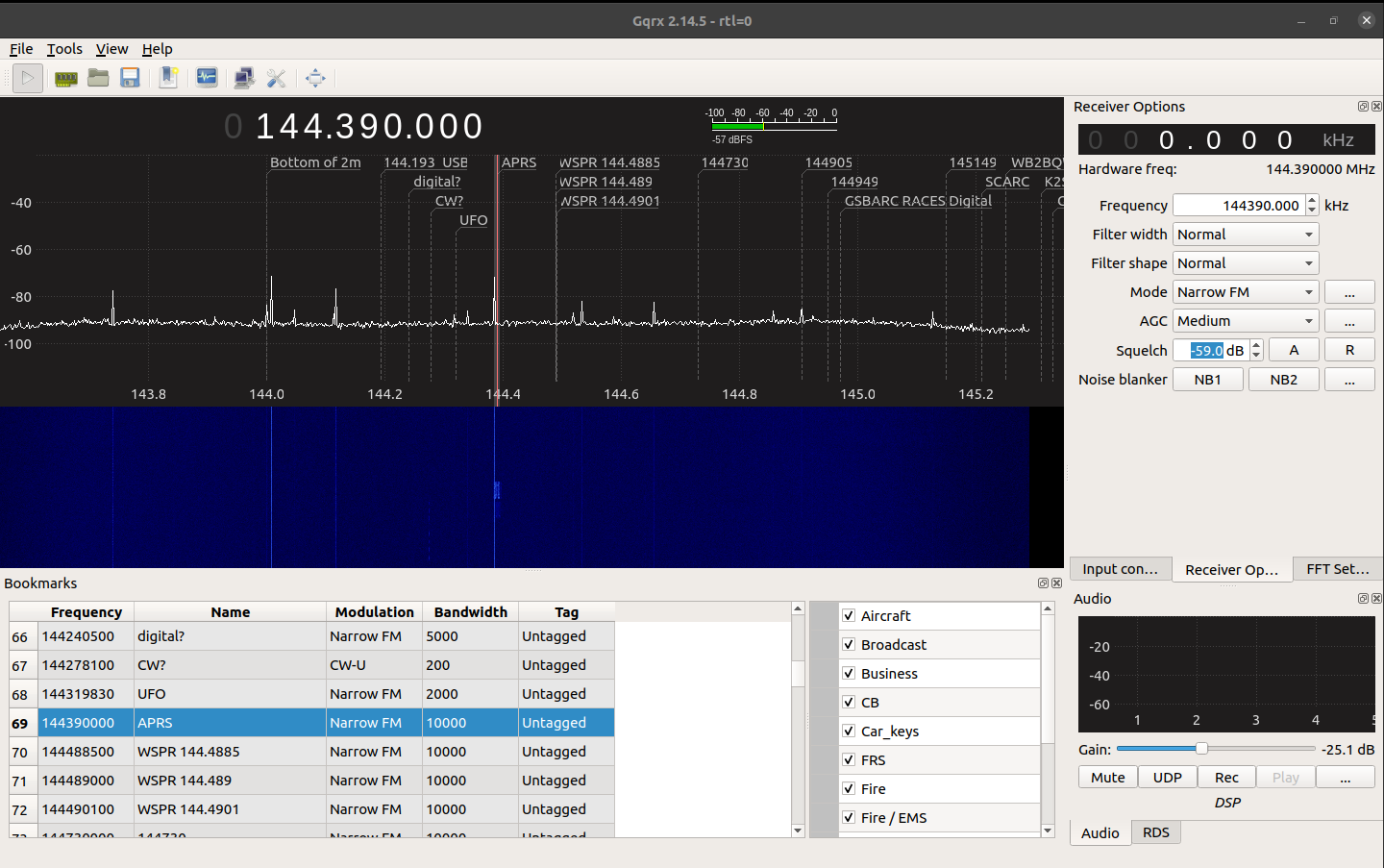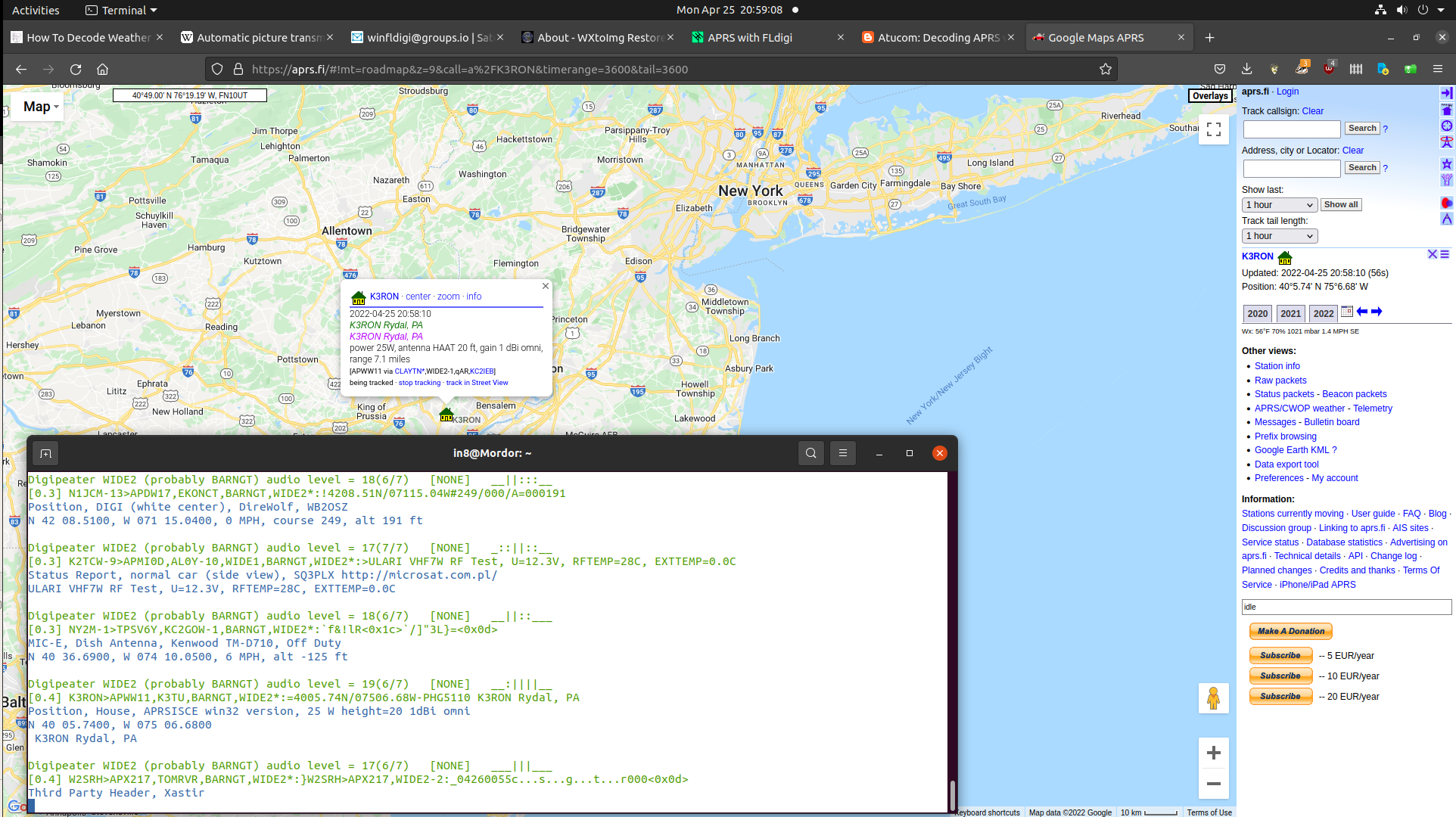SDR, gqrx, and direwolf
When I first got my license one of the first devices I picked up was an RTL-SDR usb dongle (Amazon Link). While there was no need to be licensed to listen (this is a receive only SDR), it wasn't until I started reading Amateur Radio material that I even realized these devices existed. I had many hours of fun with this inexpensive device. At the time it cost $25, and the recent supply chain issues have raised the price to $30 but its still a bargain.
At some point I made the mistake of putting the SDR on the same coax to the antenna as my radio without protecting the SDR and I believe that I destroyed it by keying up. I couldn't see any obviously burnt out components when I opened it up but the effect was that software would display the waterfall for only a very limited frequency range. Changing the frequency range in the software would change the displayed frequency numbers on screen but there would be no corresponding change in the waterfall graphic or audible reception. For the longest time I was convinced that the problem was in software, and I wasted a very long time trying to figure out what I had done wrong but after testing on various machines in different operating systems (Windows, Linux, and chromebook's Crostini linux) I became convinced that it was the device hardware.
I ordered up a replacement which came today and promptly tested in Linux (gqrx), Windows (SDR#) and on the chromebook (gqrx)
and can confirm everything working as expected. In addition to tuning around the bands and listening to
repeaters I had bookmarked in gqrx (a nice feature of that software) I was also able to decode some APRS transmissions
by running direwolf (in a terminal) which saw the audio from gqrx through pulseaudio automatically.

